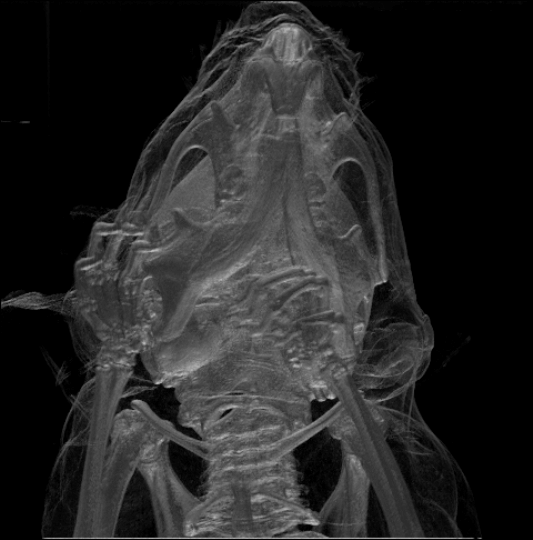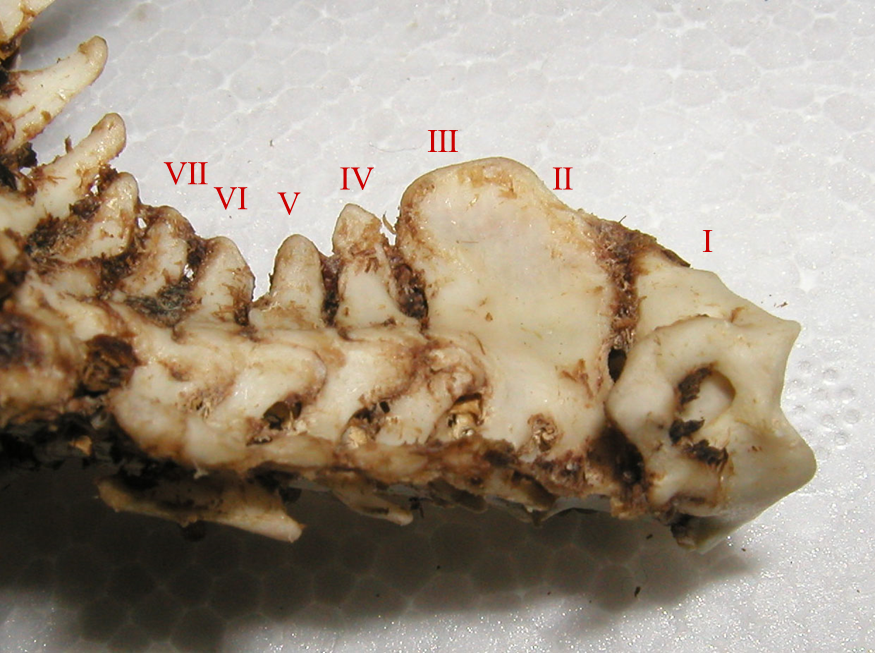|
Pedetid
The Pedetidae are a family of rodents. The two living species, the springhares, are distributed throughout much of Southern Africa and also around Kenya, Tanzania, and Uganda. Fossils have been found as far north as Turkey.McKenna, M.C. and Bell, S.K. 1997. Classification of Mammals: Above the species level. New York: Columbia University Press, 631 pp. (p. 185) Together with the anomalures and zenkerella, Pedetidae forms the suborder Anomaluromorpha. The fossil genus '' Parapedetes'' is also related. Taxonomy The family includes one living genus and four extinct genera. The Asian fossil '' Diatomys'' was previously included, but is now classified in the family Diatomyidae with the Laotian rock rat. *Family Pedetidae **Genus ''Pedetes'' ***South African springhare, ''P. capensis'' ***†''Pedetes gracilis'' ***†''Pedetes hagenstadti'' ***East African springhare, ''P. surdaster'' **Genus †''Megapedetes'' ***†''Megapedetes aegaeus'' ***†''Megapedetes gariepensis ... [...More Info...] [...Related Items...] OR: [Wikipedia] [Google] [Baidu] |
Megapedetes
''Megapedetes'' is a genus of fossil rodents related to the springhare and other species of the genus ''Pedetes'', with which it forms the family Pedetidae. At least four species are known, which ranged through Africa, southwestern Asia, and southeastern Europe from the Miocene to the Pliocene. The genus was larger than ''Pedetes''. Species of ''Megapedetes'' were larger, relatively low-crowned (brachydont) pedetids with short, mostly fused roots under their teeth. There was no gutter surrounding the incisive foramina (openings in the front part of the palate). The bones are more robustly built than in ''Pedetes'' and in another fossil relative of the springhares, '' Parapedetes''.Mein and Senut, 2003, p. 161 Unlike in ''Pedetes'', the first metatarsal (a foot bone) is present.Mein and Senut, 2003, p. 162 It may have fed on less rough vegetation than ''Pedetes'' does.Winkler, 1992, p. 239 In Namibia, two species are known from the early middle MioceneMein and Senu ... [...More Info...] [...Related Items...] OR: [Wikipedia] [Google] [Baidu] |
Rusingapedetes
''Rusingapedetes'' is an extinct genus of pedetid that lived during the Neogene period. Distribution ''Rusingapedetes tsujikawai'' is known from Early Miocene deposits in Kenya Kenya, officially the Republic of Kenya, is a country located in East Africa. With an estimated population of more than 52.4 million as of mid-2024, Kenya is the 27th-most-populous country in the world and the 7th most populous in Africa. .... References Miocene mammals of Africa Monotypic prehistoric rodent genera Fossil taxa described in 2011 Pedetidae {{Paleo-rodent-stub ... [...More Info...] [...Related Items...] OR: [Wikipedia] [Google] [Baidu] |
Anomaluromorpha
Anomaluromorpha is a clade that unites the anomalures, springhares, and zenkerella. It has alternately been designated as either a suborder or infraorder. Most recently, recognized it as one of five suborders of rodents. Characteristics The suborder Anomaluromorpha was erected to unite sciurognathous rodents with a hystricomorphous zygomasseteric system restricted to sub-Saharan Africa. Many authors have suggested that the two extant families may be only distantly related, and that they belong to separate suborders or infraorders. For example, the Pedetidae are the only family of rodents with multiserial enamel except for the Hystricognathi. This characteristic, the hystricomorphous zygomatic region, and a common distribution in southern continents has led many researchers to suggest that the springhares (but not anomalures) may be allied with hystricognaths. generated some support for Anomaluromorpha in a molecular phylogeny using 12S rRNA and cytochrome b. Famili ... [...More Info...] [...Related Items...] OR: [Wikipedia] [Google] [Baidu] |
Diatomys
''Diatomys'' is an extinct rodent genus known from Miocene deposits in China, Japan, Pakistan, and Thailand. The fossil range is from the late Early Miocene to the Middle Miocene (22.5–11 Ma). Specimens Specifically the strata and regions from which ''Diatomys'' has been collected are: Shanwang series in Shandong province, China, Jiangsu province in China, Kyūshū in Japan, the Siwaliks in northern Pakistan, and Li Basin in Lamphun Province, Thailand. Li (1974) described ''Diatomys shantungensis'' on the basis of two moderately complete specimens from Shandong. This material had good preservation of dental characters, but much of the skull was difficult to interpret due to flattening. Dawson ''et al.'' (2006) reported the finding of another ''D. shantungensis'' fossil from Shandong that showed much improved preservation of cranial and skeletal characters. Impressions of hair and whiskers were observable in the specimen. Mein and Ginsburg (1985) described ''Diatomys li ... [...More Info...] [...Related Items...] OR: [Wikipedia] [Google] [Baidu] |
Early Miocene
The Early Miocene (also known as Lower Miocene) is a sub-epoch of the Miocene epoch (geology), Epoch made up of two faunal stage, stages: the Aquitanian age, Aquitanian and Burdigalian stages. The sub-epoch lasted from 23.03 ± 0.05 annum, Ma to 15.97 ± 0.05 Ma (million years ago). It was preceded by the Oligocene epoch. As the climate started to get cooler, the landscape started to change. New mammals evolved to replace the extinct animals of the Oligocene epoch. The first members of the hyena and weasel family started to evolve to replace the extinct ''Hyaenodon'', entelodonts and bear-dogs. The chalicotheres survived the Oligocene epoch. A new genus of entelodont called ''Daeodon'' evolved in order to adapt to the new habitats and hunt the new prey animals of the Early Miocene epoch; it quickly became the top predator of North America. But it became extinct due to competition from ''Amphicyon'', a newcomer from Eurasia. ''Amphicyon'' bested ''Daeodon'' because the bear-dog's la ... [...More Info...] [...Related Items...] OR: [Wikipedia] [Google] [Baidu] |
Pedetes
''Pedetes'' is a genus of rodent, the springhares, in the family Pedetidae. Members of the genus are distributed across southern and Eastern Africa. Species A number of species both extant and extinct are classified in the genus ''Pedetes''. They include: * South African springhare or ''springhaas'' (''Pedetes capensis'') * East African springhare (''Pedetes surdaster'') * ''Pedetes laetoliensis'' (Davies, 1987) (Pliocene fossil) Throughout the 20th century, the living species (and occasionally the prehistoric one) were merged into ''P. capensis'', making the genus monotypic. Ecology These rodents are generally nocturnal and sleep through the day in burrows they dig. They feed on foliage, roots and other vegetable matter, and occasionally arthropods. Outside the burrow they usually move around by hopping on their hind legs. When only one springhare species was recognized, it was listed as vulnerable by the IUCN in 1996 due to an approximately 20% decrease in the population ... [...More Info...] [...Related Items...] OR: [Wikipedia] [Google] [Baidu] |
Rodent Families
Rodents (from Latin , 'to gnaw') are mammals of the order Rodentia ( ), which are characterized by a single pair of continuously growing incisors in each of the upper and lower jaws. About 40% of all mammal species are rodents. They are native to all major land masses except for Antarctica, and several oceanic islands, though they have subsequently been introduced to most of these land masses by human activity. Rodents are extremely diverse in their ecology and lifestyles and can be found in almost every terrestrial habitat, including human-made environments. Species can be arboreal, fossorial (burrowing), saltatorial/ricochetal (leaping on their hind legs), or semiaquatic. However, all rodents share several morphological features, including having only a single upper and lower pair of ever-growing incisors. Well-known rodents include mice, rats, squirrels, prairie dogs, porcupines, beavers, guinea pigs, and hamsters. Once included with rodents, rabbits, hares, and pikas, wh ... [...More Info...] [...Related Items...] OR: [Wikipedia] [Google] [Baidu] |
Mammals Of Africa
''Mammals of Africa'' is a book series of six volumes from Bloomsbury Publishing. Published in 2013 and edited by Jonathan Kingdon, David Happold, Thomas Butynski, Michael Hoffmann, Meredith Happold and Jan Kalina, it describes every species of African land mammal A mammal () is a vertebrate animal of the Class (biology), class Mammalia (). Mammals are characterised by the presence of milk-producing mammary glands for feeding their young, a broad neocortex region of the brain, fur or hair, and three ... which comprise 1,160 species and 16 orders. Published volumes *Volume 1: Introductory Chapters and Afrotheria, edited by Jonathan Kingdon, David Happold, Thomas Butynski, Michael Hoffmann, Meredith Happold and Jan Kalina (352 pages) *Volume 2: Primates, edited by Thomas M. Butynski, Jonathan Kingdon and Jan Kalina (560 pages) *Volume 3: Rodents, Hares and Rabbits, edited by David C.D. Happold (784 pages) *Volume 4: Hedgehogs, Shrews and Bats, edited by Meredith Happo ... [...More Info...] [...Related Items...] OR: [Wikipedia] [Google] [Baidu] |
Pedetidae
The Pedetidae are a family (biology), family of rodents. The two living species, the springhares, are distributed throughout much of Southern Africa and also around Kenya, Tanzania, and Uganda. Fossils have been found as far north as Turkey.McKenna, M.C. and Bell, S.K. 1997. Classification of Mammals: Above the species level. New York: Columbia University Press, 631 pp. (p. 185) Together with the anomalures and Cameroon scaly-tail, zenkerella, Pedetidae forms the suborder Anomaluromorpha. The fossil genus ''Parapedetes'' is also related. Taxonomy The family includes one living genus and four extinct genera. The Asian fossil ''Diatomys'' was previously included, but is now classified in the family Diatomyidae with the Laotian rock rat. *Family Pedetidae **Genus ''Pedetes'' ***South African springhare, ''P. capensis'' ***†''Pedetes gracilis'' ***†''Pedetes hagenstadti'' ***East African springhare, ''P. surdaster'' **Genus †''Megapedetes'' ***†''Megapedetes aegae ... [...More Info...] [...Related Items...] OR: [Wikipedia] [Google] [Baidu] |
East African Springhare
The East African springhare (''Pedetes surdaster'') is an African mammal found in Kenya and Tanzania that is closely related to the South African springhare. It is a member of the Pedetidae, a rodent family, and resembles a small kangaroo. Taxonomy ''Pedetes surdaster'' was recognised by Matthee and Robinson in 1997 as a species distinct from the southern African springhare ''(P. capensis)'' based on genetic, morphological, and ethological differences. ''P. capensis'' from South Africa has fewer chromosomes (2n= 38) than does ''P. surdaster'' which has (2n = 40) and some other genetic variations. The species was confirmed by Dieterlen in 2005. Unlike South African springhare (''Pedetes capensis''), the second and third cervical vertebrae are fused in this species. Distribution This species is found in central and southern Kenya and most of Tanzania. A single specimen has been recorded in Uganda near the Kenya border, at Mount Moroto. It is found from sea level up to an alt ... [...More Info...] [...Related Items...] OR: [Wikipedia] [Google] [Baidu] |

